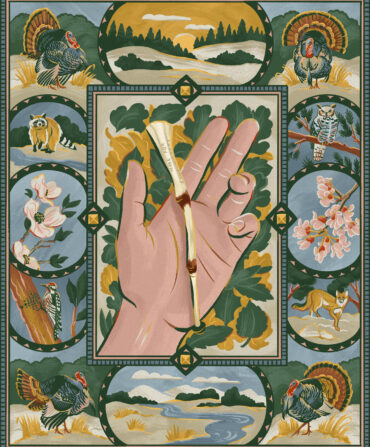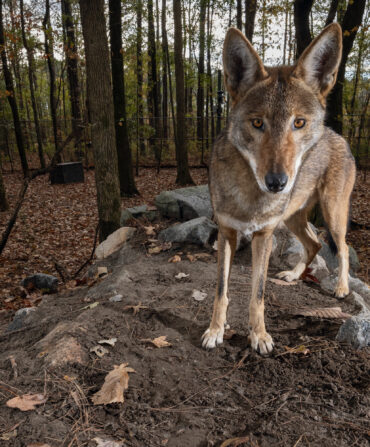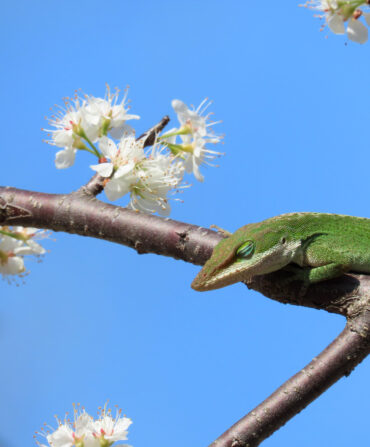Land & Conservation
Meet One of the South’s Strangest—and Rarest—Amphibians
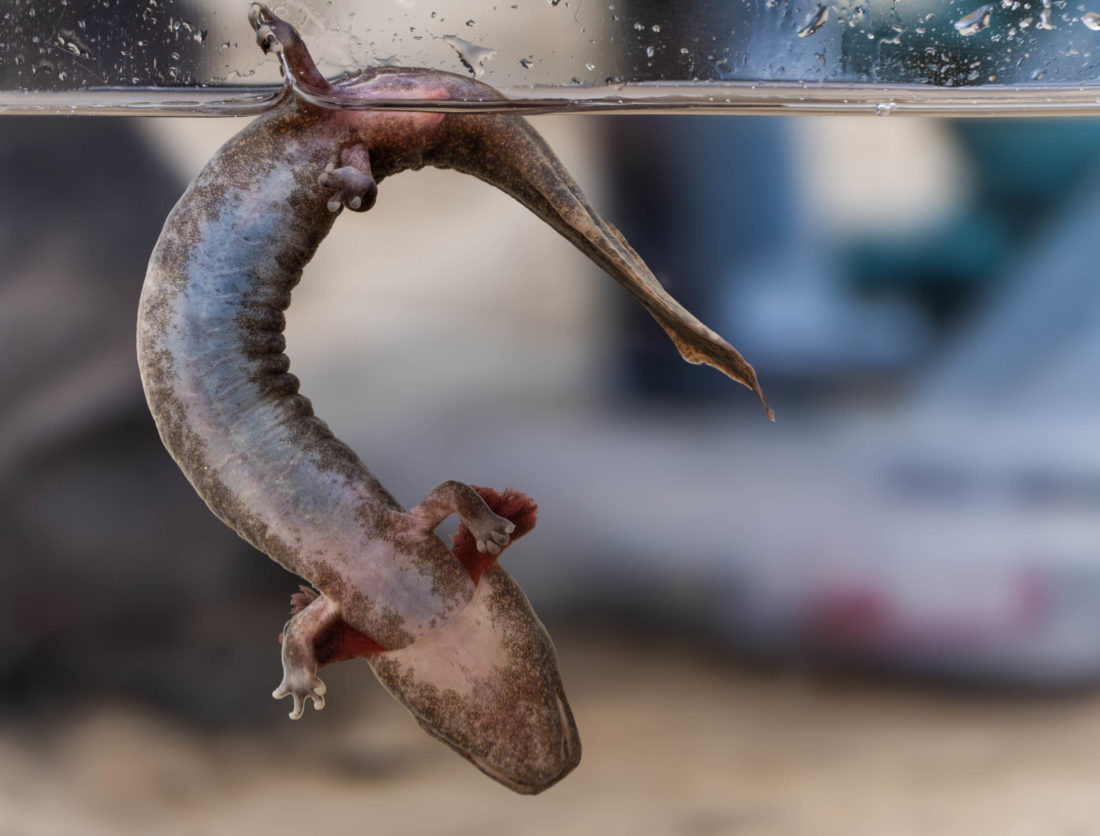
Photo: Giedrius Kartanovic
The subject line of my email thread with Jim Godwin and Joe Jenkins, aquatic biologists with Auburn University’s Alabama Natural Heritage Program, reads simply, “waterdogging.” As I will soon experience firsthand, waterdogging refers to the act of slogging through the freezing waters of Alabama’s Black Warrior River in the dead of winter, trying—and mostly failing—to trap an eight-inch salamander that best resembles a small, wet dragon, if it resembles anything at all.
“I’d say we have less than a thirty percent chance of catching one,” Jenkins tells me cheerfully when I meet up with him on a cold late-winter morning, as we don chest waders on the bank of a stream in Bankhead National Forest, an hour northwest of Birmingham. Jenkins has been trapping Black Warrior waterdogs since 2014, and he reckons that in all that time, he’s caught about two dozen.

Photo: Giedrius Kartanovic
Jenkins walks along the riverbank in Bankhead National Forest.
That makes sense, given that there’s only a few hundred in existence. Waterdogs were once abundant across the Black Warrior watershed, but years of habitat degradation, including sedimentation from coal mining and waste runoff from poultry farming, have taken their toll. Today, they’ve mostly disappeared except in certain segments of the clean, protected waters within Bankhead. Godwin, Jenkins, and a network of conservation partners, including the Amphibian and Reptile Conservancy, the Black Warrior Riverkeeper, the Nature Conservancy, and federal agencies, are scrambling to bring back the species before it’s too late. “They’re an Alabama treasure,” Godwin says, and a shining example of the incredible assortment of life found in the state’s rivers and streams, a global hotspot of freshwater biodiversity.
A day before my arrival, Jenkins set out twenty-five unmarked wire minnow traps throughout a winding section of stream, tucking them into the likeliest places in the water. When I ask how he remembers where the traps are, he taps his head. “It’s all up here. We don’t want to advertise to the world exactly where something this rare might be sitting in a trap.”
We trudge through the icy water, pulling up each trap to the same result—empty but for the occasional fish or crayfish. “It’s freezing work,” says Allison Cochran, Bankhead National Forest’s wildlife biologist. She oversees everything from species-specific conservation plans to large-scale forest management in the 181,230-acre refuge.
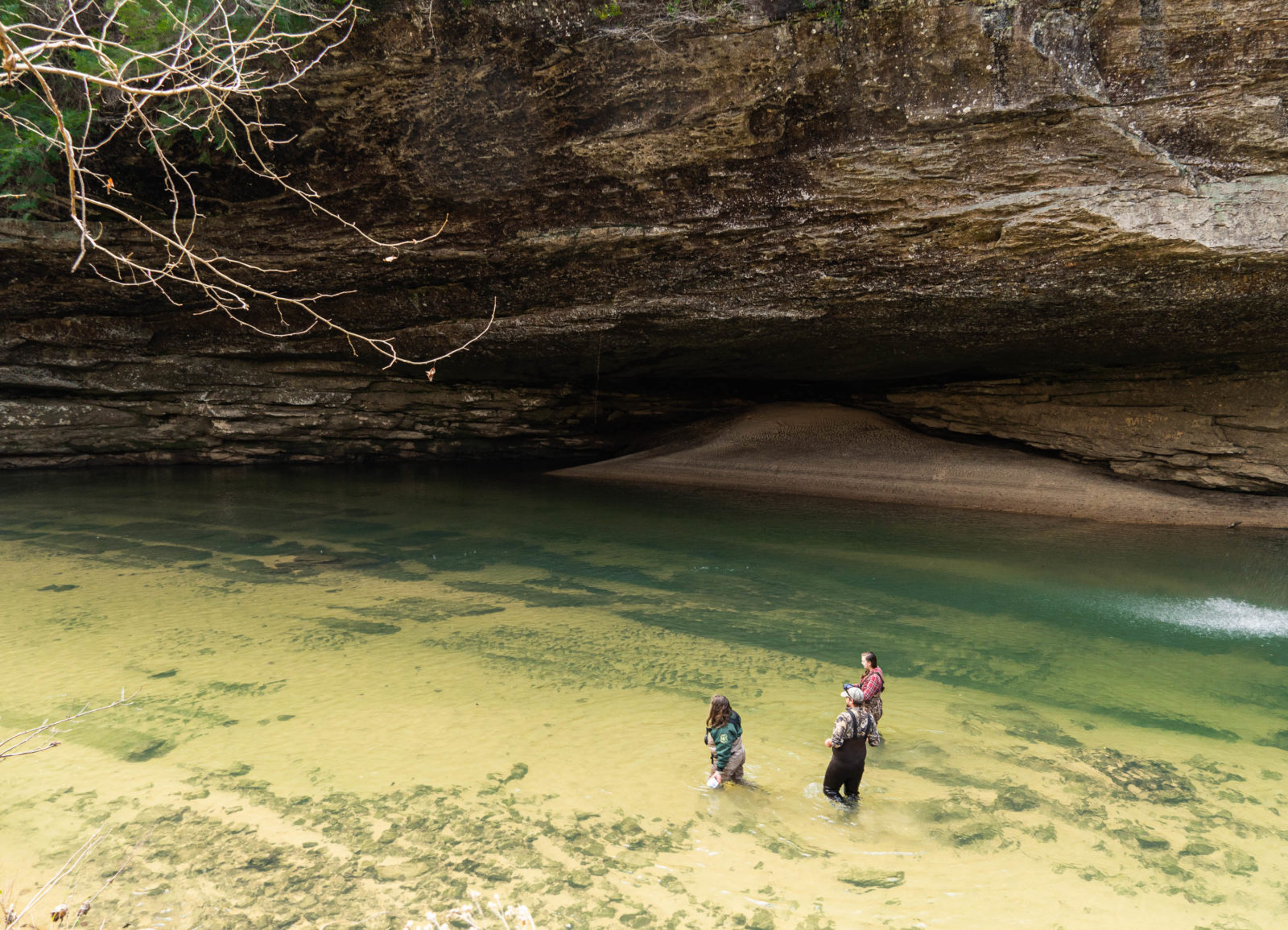
Photo: Giedrius Kartanovic
The author, Jenkins, and Cochran traverse the river.
“We aren’t positive where they go in the summer,” Godwin explains. “But we do know that when it’s cold and the water is really miserable, that’s the time to go out and find them.” Waterdogs are sensitive creatures that breathe through external gills and permeable skin, and it’s likely they’re more active in winter because the colder water holds more dissolved oxygen. The biologists trap in the short window from November through March, rushing to gather the data they need to inform conservation work the rest of the year.
Today, we beat the odds. Cochran pulls trap sixteen lightly from the water by its cord, and I can make out a strange-looking, murky brown blob through the mesh. “My heart rate goes right up anytime I’m this close to an endangered species,” she says in reverent tones. Trap seventeen, located in the same thicket of underwater branches and leaves, holds an even greater surprise: Two waterdogs huddle within.

Photo: Giedrius Kartanovic
Cochran discovers the first waterdog in a trap.
In the cold air, the amphibians look dark, slimy, and nondescript. But once Jenkins transfers them to a bucket of water, they transform into the fantastical: Blood-red, oxygenated gills unfurl, floating in a feathery cloud around shovel-shaped heads. A black stripe slashes each cheek like war paint, and their skin color ranges from creamy white to dark brown to black, flecked with subtle gold.
The body of a Black Warrior waterdog tells an ancient story of evolution. “They are flat and compressed, so they can work their way under rocks and into crevices at the bottoms of the streams,” Godwin says. “It helps them withstand flooding and means they can get down in relatively shallow water.” The tail is paddle-shaped, affording them excellent aquatic navigability. At a makeshift station on the riverbank, Jenkins measures and weighs the salamanders and snaps photos of the unique spot patterns on each one’s back, so he’ll know if he catches the same individual twice. Finally, he snips each tail (“worse than clipping a toenail, not as bad as clipping a toe”) for genetic analysis.

Photo: Giedrius Kartanovic
A waterdog waiting to be measured and weighed.
The next goal is to get more habitat up to snuff—the Locust Fork of the Black Warrior River is promising, and the Nature Conservancy is already working on streamside restoration there to prevent siltation and improve water quality. “If the habitat is good, they can be extremely abundant,” Cochran explains. “Like all of us, they need clean, free-flowing water.” The biologists say that passage of the Recovering America’s Wildlife Act, introduced in 2021, would be a major help in funding future conservation work. Eventually, they hope to captive breed the waterdog for reintroductions. For now, though, they need to gather more information on the salamanders’ locations, numbers, and behavior.
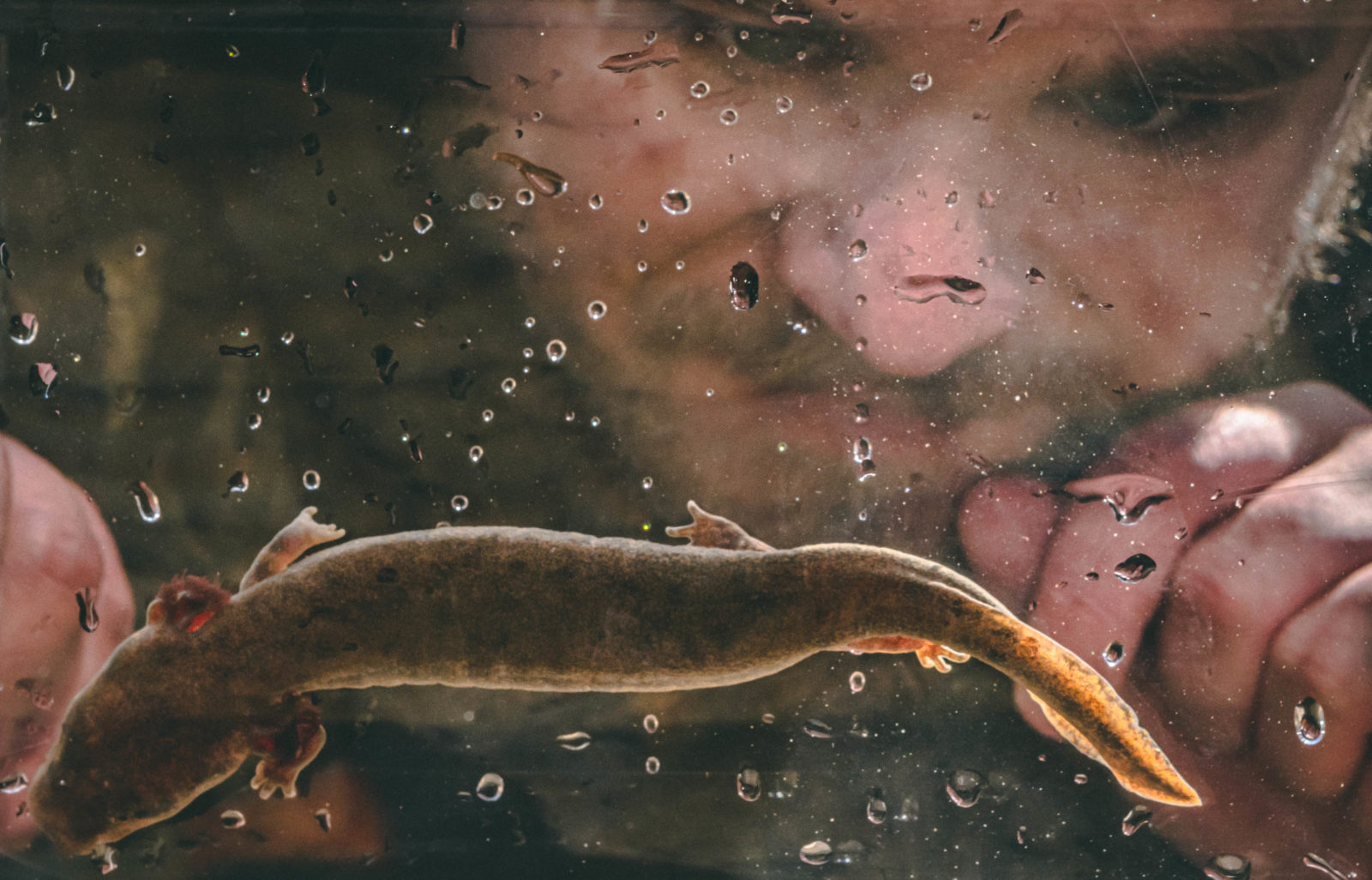
Photo: Giedrius Kartanovic
Jenkins examines a waterdog after its work-up.
Waterdogs have a reptilian counterpart, too: the flattened musk turtle, a critically threatened, and often poached, turtle that uses the exact same habitat, making protection of the Black Warrior watershed a two-for-one conservation game. The work also benefits a myriad of other creatures that depend on these waters, including mussels, aquatic plants, and fish.
At the stream, Jenkins clips the final waterdog tail and wades back into the water, the salamanders resting in clear plastic bags. “I hate to know that I might be one of the last people who gets to see them,” he says, shaking his head. He releases the waterdogs exactly where we caught them, and they pause in the clear water—still and almost invisible among the leaf litter. Jenkins will be back tomorrow, and the next day, even though the temperatures are projected to fall into the low teens, checking each trap, hoping against hope for a waterdog.

Photo: Giedrius Kartanovic
Black Warrior waterdogs are fully aquatic, relying on their gills and permeable skin to breathe.


